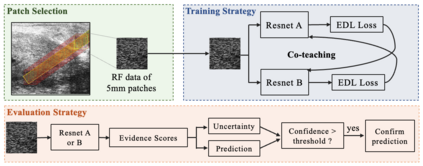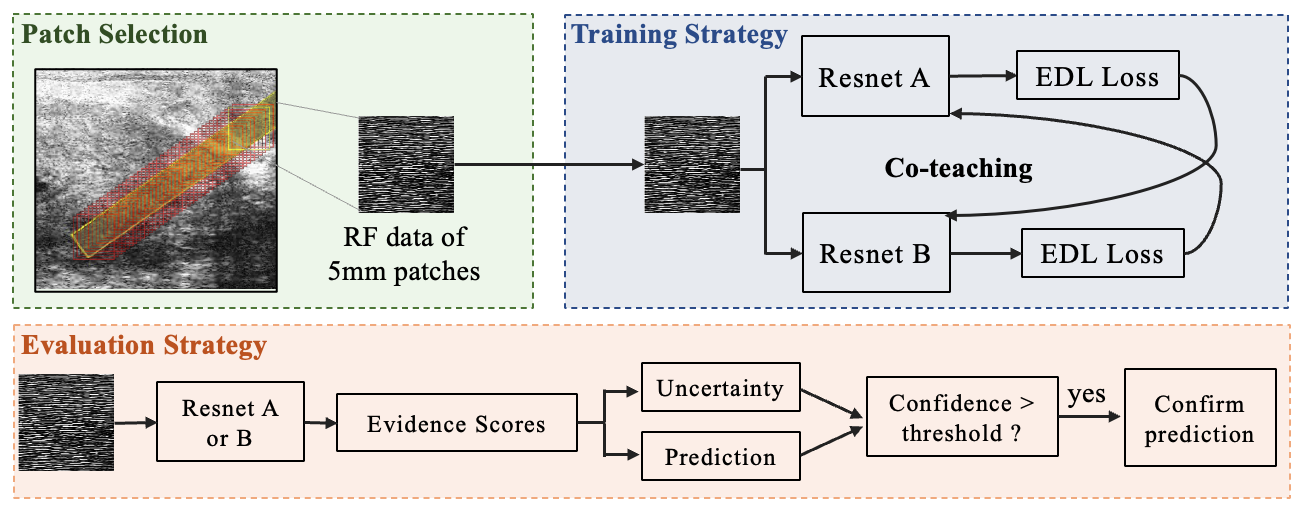MOTIVATION: Detection of prostate cancer during transrectal ultrasound-guided biopsy is challenging. The highly heterogeneous appearance of cancer, presence of ultrasound artefacts, and noise all contribute to these difficulties. Recent advancements in high-frequency ultrasound imaging - micro-ultrasound - have drastically increased the capability of tissue imaging at high resolution. Our aim is to investigate the development of a robust deep learning model specifically for micro-ultrasound-guided prostate cancer biopsy. For the model to be clinically adopted, a key challenge is to design a solution that can confidently identify the cancer, while learning from coarse histopathology measurements of biopsy samples that introduce weak labels. METHODS: We use a dataset of micro-ultrasound images acquired from 194 patients, who underwent prostate biopsy. We train a deep model using a co-teaching paradigm to handle noise in labels, together with an evidential deep learning method for uncertainty estimation. We evaluate the performance of our model using the clinically relevant metric of accuracy vs. confidence. RESULTS: Our model achieves a well-calibrated estimation of predictive uncertainty with area under the curve of 88$\%$. The use of co-teaching and evidential deep learning in combination yields significantly better uncertainty estimation than either alone. We also provide a detailed comparison against state-of-the-art in uncertainty estimation.
翻译:MOTIVATION:在跨红外超声道导导导生物检查期间检测前列腺癌是一个挑战性的挑战。癌症的外观、超声道手工艺的存在以及噪音的出现等差异性都造成了这些困难。高频超声成像(微超声波)最近的进展大大提高了组织成像的高分辨率能力。我们的目标是调查专门为微超声导导前列列腺癌生物检查开发一个强大的深层次学习模型的情况。要临床采用模型,关键的挑战是如何设计一种解决方案,既能自信地识别癌症,又能从引入薄弱标签的生物心理学样本的粗皮细胞病理学测量中学习。方法:我们使用从194个接受过前列腺生物检查的病人那里获得的微声成像数据集,大大提高了组织生物测定结果的不确定性。我们用共同教学模型来培养深度模型来处理标签中的噪音,同时使用明显的深层次的学习方法来估计不确定性。我们用与临床相关的精确度比信任度来评估模型的绩效。 RETESS-AREDS:我们模型在显著的不确定性估算领域实现了一个清晰的精确度估算。






